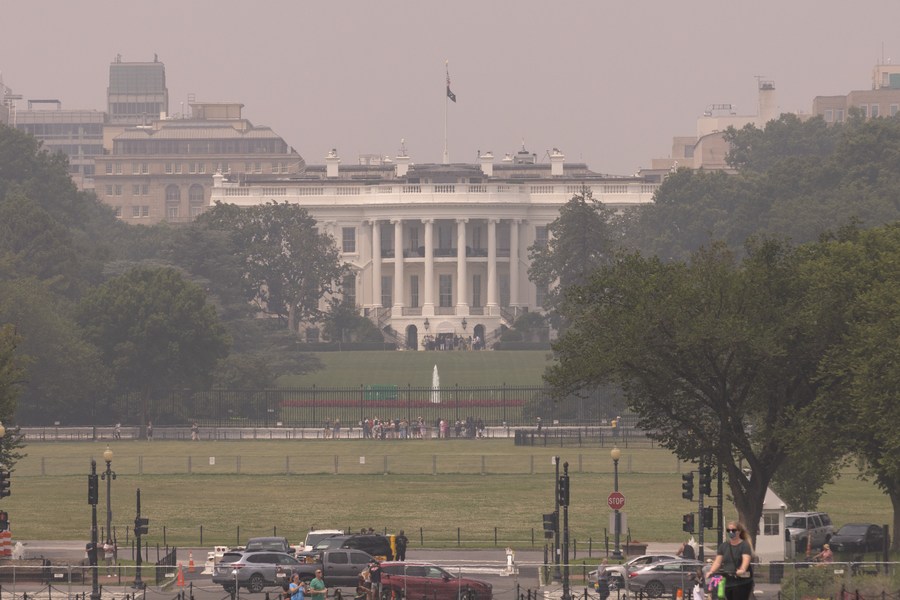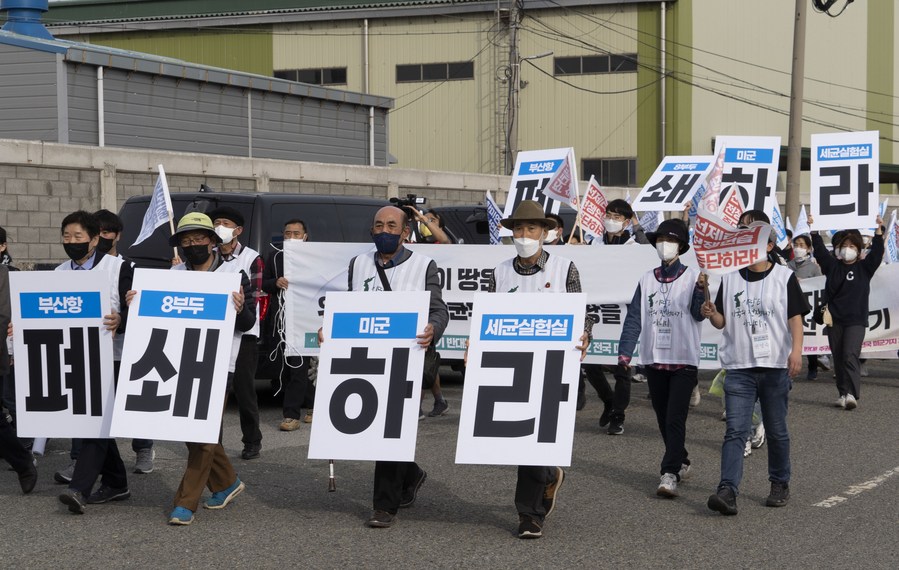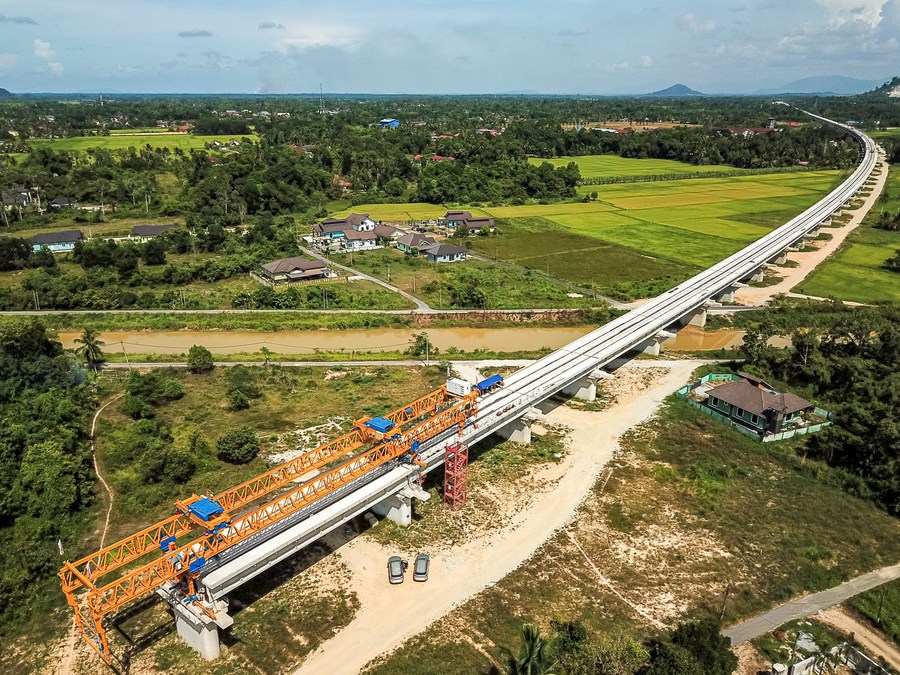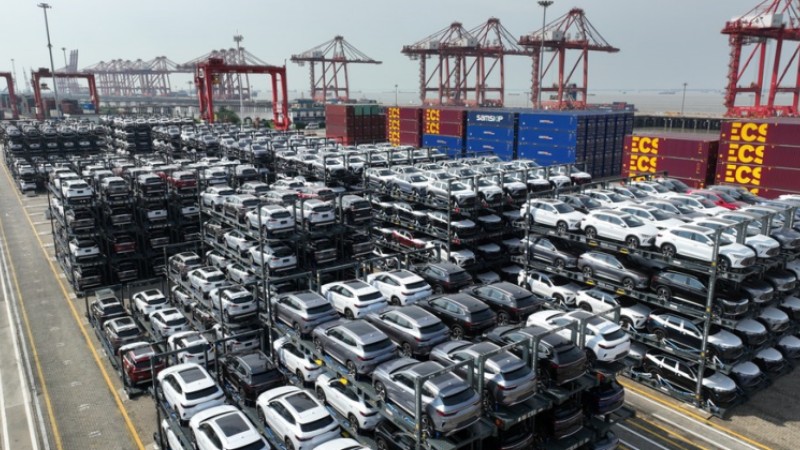U.S. "Indo-Pacific strategy" sparks alarming concerns of confrontation, division in Asia-Pacific

This photo taken on June 29, 2023 shows the White House in Washington, D.C., the United States. (Photo by Aaron Schwartz/Xinhua)
With the aim of maintaining its global hegemony by building an alliance in the Asia-Pacific against China, the U.S. effort to implement its so-called "Indo-Pacific strategy" has raised alarming concerns due to its potential to escalate conflicts and foster division in the region.
HONG KONG, Aug. 11 (Xinhua) -- U.S. Secretary of State Antony Blinken and U.S. Defense Secretary Lloyd Austin conducted a Pacific tour in late July in a useless attempt to strengthen Washington's influence in the region by sowing discord between China and Pacific island countries.
The tour is the latest U.S. effort to implement its so-called "Indo-Pacific strategy," which involves strengthening military cooperation with its regional allies and pitching the Indo-Pacific Economic Framework (IPEF) to exclude China from regional trading systems and supply chains.
With the aim to maintain its global hegemony by building an alliance in the Asia-Pacific against China, the so-called "strategy" has raised alarming concerns due to its potential to escalate conflicts and foster division in the region.
LAYERS OF ALLIANCES
In line with the "Indo-Pacific strategy" unveiled by the Biden administration in early 2022, the United States has been trying hard to encircle China by establishing multiple layers of alliances. The most recent demonstration of these efforts was seen during the Pacific tour by Blinken and Austin.
During his stop in Tonga, Blinken labeled China's engagement in the region as "problematic behavior." In New Zealand, Blinken tried to persuade the country to join the trilateral AUKUS alliance and in Papua New Guinea, Austin announced the deployment of a U.S. coast guard ship to the Pacific nation.
Moreover, the United States is vigorously promoting military alliances with Japan and South Korea, aiming to build a trilateral military alliance. It is also accelerating the implementation of the AUKUS agreement and Quad alliance (formally the Quadrilateral Security Dialogue) while strengthening military ties with the Philippines through joint exercises.
It has deployed "strategic assets" more frequently around the Korean Peninsula and sought further military cooperation with South Korea and Japan, as a U.S. strategic nuclear submarine docked at South Korea's southeast port of Busan last month, the first time in over four decades.

Civic groups and local residents take to the streets to protest against the U.S. biological labs near a U.S. military base in Busan, South Korea, April 5, 2022. (Photo by James Lee/Xinhua)
Beyond the Korean Peninsula, the United States is also strengthening the construction of military bases in Papua New Guinea, Palau, the Marshall Islands and other places in the Pacific region. NATO, a trans-Atlantic cold-war relic led by the United States, is also trying to extend its reach to the Asia-Pacific.
CAUSING CONCERNS
The U.S. "Indo-Pacific strategy" is dividing the most vibrant region of the world and driving it closer to confrontation and conflicts, said experts.
"Such actions not only escalate regional tensions and confrontation, raising the risk of war on the peninsula, but also provoke arms races in the region, which is worrisome," said Woo Su-keun, director of the Institute of East Asian Studies of South Korea. "Countries in the region, including South Korea, should be on high alert."
For half a century, China and South Pacific island countries have enjoyed bilateral cooperation covering a wide range of fields. As Chinese Foreign Minister Wang Yi has said, China always respects the sovereignty and needs of the island countries, and adheres to the principle of "island countries-led and island countries-owned."
However, the United States is trying to instill a doctrine in its allies in the region to jointly assume that China is a threat to the region, said Yanyan Mochamad Yani, a professor of international relations at Indonesia's Padjadjaran University.
What the United States has done in terms of a so-called construction of regional balance is nothing new, while its commitment to the prosperity of the region remains uncertain, said Yani.
For regional countries, experts believe that aligning themselves with the U.S. "Indo-Pacific strategy" is imprudent and perilous. The Asia-Pacific countries are also clear about this, with Tonga's government saying that it had no concerns about its relationship with China and New Zealand refusing to join AUKUS.
"It is unwise and dangerous for South Korea to abandon its balanced and neutral diplomacy and stand at the forefront of bloc politics by supporting the U.S.-led 'Indo-Pacific strategy,'" Woo said.
The Philippines should continue to strive for what it calls an independent or, in other words, a balanced foreign policy, said Aaron Rabena, a research fellow at the Asia-Pacific Pathways to Progress Foundation.
IPEF SERVES U.S. SELF-INTEREST
U.S. officials have claimed that the IPEF, an economic arm of the "Indo-Pacific strategy," would become an important platform for the U.S. and Indo-Pacific countries to enhance economic links, and provide an alternative to China for the region. However, without arrangements such as an exemption of customs duties or market access provided, the so-called high standard set by the United States is only serving its own interests.
Keshmeer Makun, a lecturer at the University of the South Pacific based in the Fijian capital Suva, said the Pacific country leaders are focused on what their partners offer, especially in the face of an infrastructure deficit, poverty and an existential threat posed by climate change, and China has provided the Pacific region with economic options.
China's Belt and Road Initiative, featuring openness, cooperation, mutual benefit and win-win results, adopts an open approach without setting limits, while the U.S. IPEF, like an exclusive circle, is selective and vague in nature, which runs counter to "freedom, openness and inclusiveness," Woo said.

This aerial photo taken on April 26, 2023 shows a construction site of the East Coast Rail Link (ECRL), a major infrastructure project under the Belt and Road Initiative (BRI) in Kelantan, Malaysia. (Xinhua/Zhu Wei)
The stability of the Asia-Pacific region should be based on respect for the sovereignty, independence and territorial integrity of all countries and on a harmonious and win-win development order. A Cold War mentality and concept based on a zero-sum game will inevitably lead to the destruction of the international order and social instability, said Zhao Shaofeng, deputy director of the China-Pacific Island Countries Climate Action Cooperation Center.
Photos
Related Stories
- China issues report on U.S. WTO compliance
- U.S. leads world in economic coercion
- Document reveals U.S. attempt to remove former Pakistani PM
- U.S. homes "too expensive to buy" due to inventory shortage: Nikkei
- Hawaii wildfire death toll rises to 53, expected to grow higher
- U.S. grappling with worst political violence since 1970s: Reuters
- U.S. banks report huge Q2 losses on soured loans: Financial Times
- U.S. consumer prices rise moderately in July, slower than expected
- Healthcare a most violent field in U.S., AP reports
- Hawaii wildfire death toll rises to 53
Copyright © 2023 People's Daily Online. All Rights Reserved.









